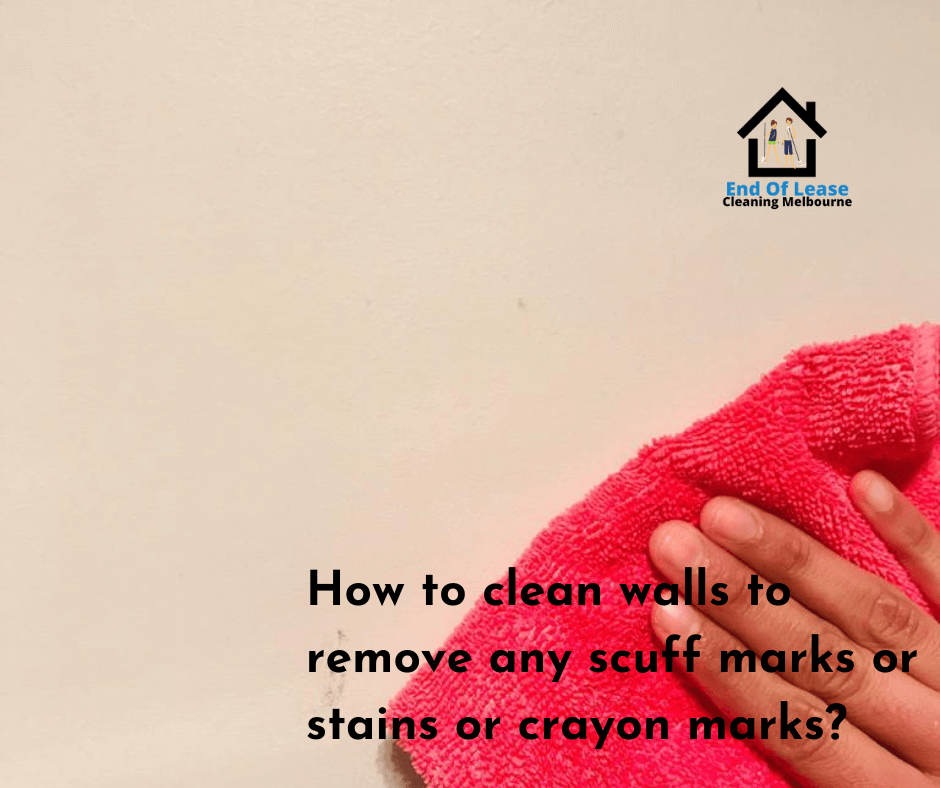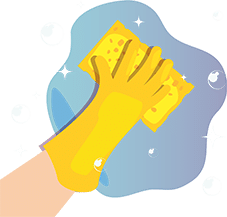If you want to clean your walls and remove scuff marks, stains, or crayon marks, here’s a step-by-step guide using simple DIY methods:
DIY Methods:
- Soap and Water: Mix a small amount of mild dish soap with warm water. Take a clean cloth or sponge, dip it in the soapy water, and gently rub the mark in circular motions. Afterward, rinse the area with clean water and pat it dry.
- Baking Soda Paste: Combine baking soda with a little water to create a thick paste. Apply the paste to the mark and use a clean cloth or sponge to scrub the area gently. Rinse the wall with water and dry it thoroughly.
- Magic Eraser: Wet a magic eraser with water and gently rub the mark until it fades away. It’s a good idea to test the magic eraser on a small, inconspicuous area first to ensure it doesn’t damage the paint.
- Toothpaste: Non-gel toothpaste can sometimes be effective in removing marks. Apply a small amount directly to the mark and use a clean cloth or sponge to gently rub it in circular motions. Wipe off the toothpaste with a damp cloth and then dry the area.
- Vinegar Solution: Mix equal parts of white vinegar and water in a spray bottle. Spray the solution on the mark and let it sit for a few minutes. Gently scrub the area with a clean cloth or sponge, then rinse with water and dry the wall.
- Rubbing Alcohol: Dampen a clean cloth or cotton ball with rubbing alcohol. Dab the mark on the wall and rub it in circular motions. Start with a small amount of rubbing alcohol and increase as needed. It’s best to test it on a hidden area first to ensure it won’t damage the paint.
- Pencil Eraser: For lighter marks or scuffs, use a clean pencil eraser. Gently rub the eraser over the mark until it disappears, and then wipe away any residue with a damp cloth.
- Hairdryer: If the mark is from crayon or wax, set a hairdryer to medium heat and aim it at the mark. The heat will soften the wax, making it easier to wipe away with a clean cloth.
- White Toothpaste and Baking Soda: Mix equal parts of white toothpaste and baking soda to create a paste. Apply the mixture to the mark and gently scrub with a clean cloth or sponge. Rinse the area with water and dry it thoroughly.
- Paint touch-up: If none of the above methods work or if the mark is stubborn, you might consider touching up the paint. Find a paint color that matches closely and carefully apply it to the marked area using a small brush.
How to Remove Marks and Clean Walls with Gumption:
To remove marks on a wall using Gumption, a popular cleaning product, follow these steps:
- Ensure the Wall is Suitable: Gumption is generally safe for most painted surfaces, but it’s a good idea to test it on a small, inconspicuous area of the wall first to ensure it doesn’t cause any damage or discoloration.
- Gather Supplies: You will need Gumption cleaning paste, a clean cloth or sponge, water, and a bucket.
- Dilute Gumption: Squeeze a small amount of Gumption paste onto a clean cloth or sponge. If the mark is particularly stubborn, you can use a more concentrated amount. If needed, moisten the cloth or sponge with a little water.
- Apply Gumption to the Mark: Gently rub the Gumption paste onto the mark using circular motions. Apply moderate pressure, but avoid scrubbing too vigorously to prevent damage to the paint. Continue rubbing until the mark begins to fade.
- Rinse the Area: Fill a bucket with clean water. Dampen a separate clean cloth or sponge with the water and use it to rinse the area where you applied the Gumption. Make sure to remove any residue from the cleaning product.
- Dry the Wall: Use a dry cloth or towel to pat the wall dry. This step is essential to prevent water spots or streaks from forming.
- Assess the Results: Take a step back and inspect the cleaned area. If the mark is completely gone, you’re finished. If it’s still visible, you can repeat the process or try a different cleaning method.
Remember to test any cleaning method on a small, inconspicuous area of the wall first to make sure it doesn’t cause any damage or discoloration. If you’re uncertain or dealing with a valuable wall surface, it’s advisable to consult a professional painter or decorator for guidance. During end of lease cleaning, the tenants are required to clean walls.




